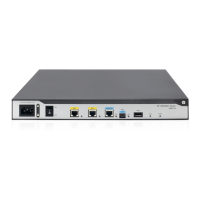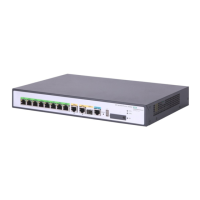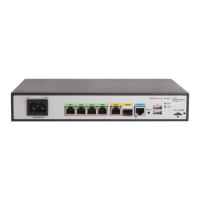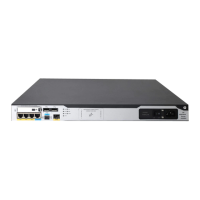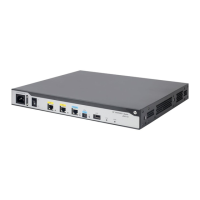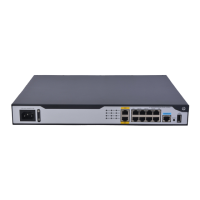133
Tasks at a
lance
Remarks
(Optional.) Configuring ATM OAM functions N/A
Configuring an ATM interface
Depending on the actual networking environment and system requirements, you might be required to
modify certain parameters of ATM interfaces and subinterfaces. For more information about ATM
interface configuration, see Interface Configuration Guide.
Configuring a PVC
In PVC mode, the network administrator configures the switching entries and assigns VPI/VCI values. You
can configure the PVCs by using the assigned VPI/VCI values. If the ATM interfaces of two ATM devices
are directly connected, you must configure the same VPI/VCI values for the interfaces.
To configure a PVC:
Ste
Command
Remarks
1. Enter system view.
system-view N/A
2. Enter ATM interface view
or ATM subinterface
view.
interface atm { interface-number |
interface-number.subnumber }
N/A
3. Create a PVC and enter
PVC view.
pvc { pvc-name [ vpi/vci ] | vpi/vci }
By default, no PVC is created.
4. Bring up the PVC.
undo shutdown By default, the PVC is up.
Configuring a PVC-group
A PVC-group can share traffic load among PVCs in it by transmitting IP packets of different priorities
through different PVCs.
You can configure the priority of IP packets carried by each PVC. IP packets are transmitted through the
PVC corresponding to the priority of the IP packets.
• If no corresponding PVC is found, the IP packets are transmitted through the default PVC.
• If no default PVC is configured, the IP packets are distributed across the PVCs that are not
configured with priorities on a per-packet basis.
• If all PVCs are configured with priorities, the IP packets are dropped.
Data packets that are not IP packets are distributed across all PVCs in the PVC-group on a per-packet
basis.
All PVCs in a PVC-group obtain the encapsulation type and protocol type from the PVC-group.
To configure a PVC-group:
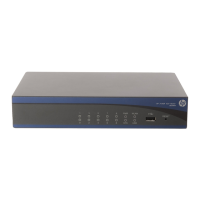
